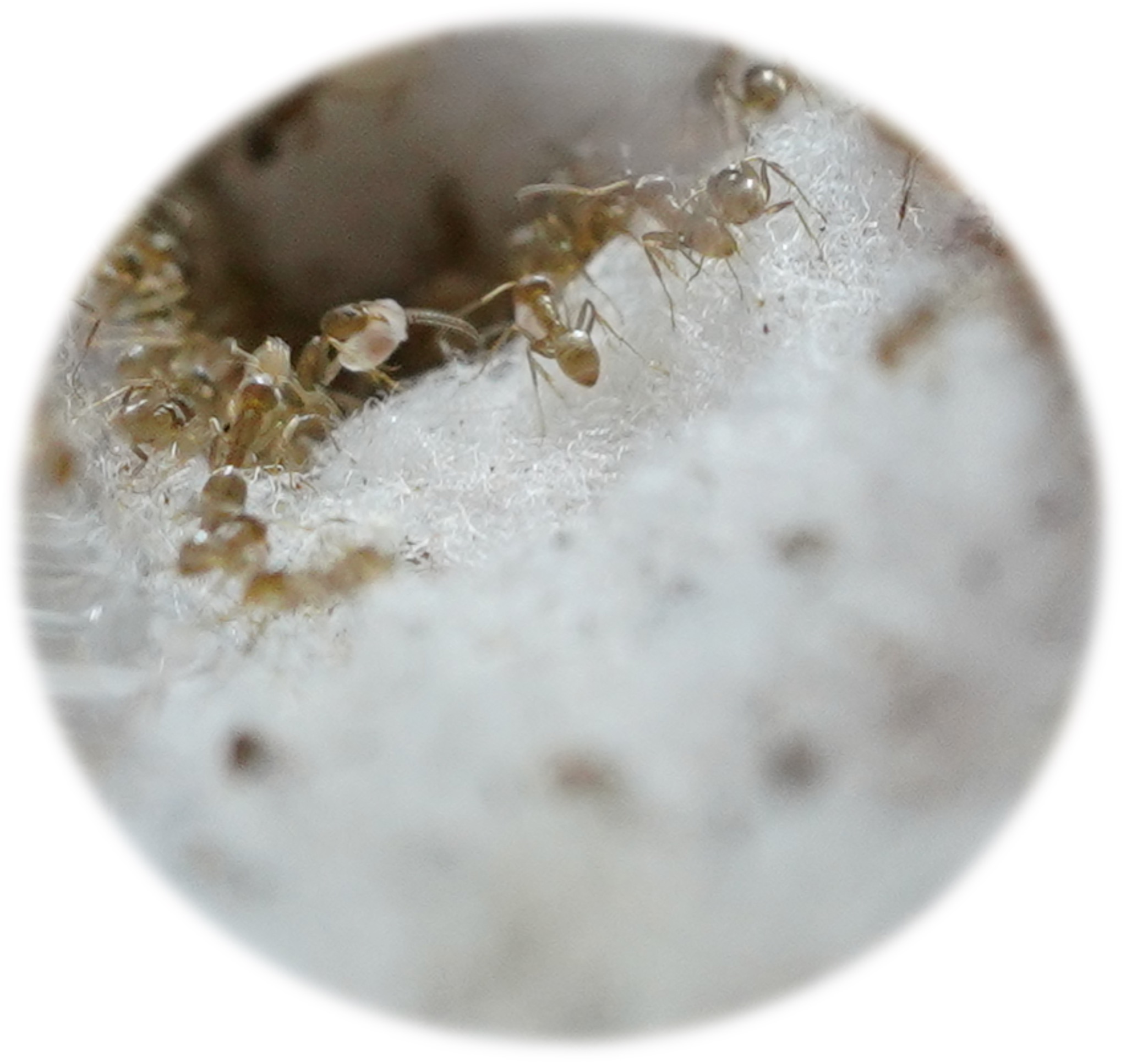Media release
From:
Peer-reviewed Experimental study Animals/Insects
Foraging ants navigate more efficiently when given energy-drink-like doses of caffeine
Ants who receive a caffeine-laced sugary reward become more efficient at navigating back to the reward’s location compared to ants that only receive sugar. Researchers report on May 23 in the journal iScience that caffeinated ants move toward the reward via a more direct path but do not increase their speed, suggesting that caffeine improved their ability to learn. The study was conducted on Argentine ants (Linepithema humile), a globally invasive species, and the researchers say that incorporating caffeine into ant baits could aid efforts to control the ants by improving bait uptake.
“The idea with this project was to find some cognitive way of getting the ants to consume more of the poisonous baits we put in the field,” says the first author and doctoral researcher Henrique Galante (@GoSocialAnts), a computational biologist at the University of Regensburg. “We found that intermediate doses of caffeine actually boost learning—when you give them a bit of caffeine, it pushes them into having straighter paths and being able to reach the reward faster.”
Argentine ants are one of the most ecologically harmful and costly invasive species worldwide. Control efforts, which focus on using poisonous baits, have proven ineffective, likely due to low bait uptake and bait abandonment. The researchers wanted to test whether using caffeine, which has been shown to improve learning in honeybees and bumblebees, might improve the ants’ ability to learn the bait location and guide their nestmates back there.
“We’re trying to make them better at finding these baits, because the faster they go and come back to them, the more pheromone trails they lay, the more ants will come, and, therefore, the faster they will spread the poison in the colony before they realize it's poison,” says Galante.
In the lab, the researchers tested whether different concentrations of caffeine would impact the ants’ ability to locate and relocate a sugary reward. The ants walked down a Lego drawbridge onto a testing platform—an A4 sheet of paper overlaying an acrylic surface—on which the researchers had placed a drop of sucrose solution laced with 0, 25 ppm, 250 ppm, or 2,000 ppm of caffeine.
“The lowest dose we used is what you find in natural plants, the intermediate dose is similar to what you would find in some energy drinks, and the highest amount is set to be the LD50 of bees—where half the bees fed this dose die—so it’s likely to be quite toxic for them,” says Galante.
The researchers used an automated tracking system to monitor how fast the ants traveled to and from the reward and the directness of their route. Overall, they tested 142 ants, and each ant was tested four times. The ants were given the opportunity to offload the food they had collected in between trials, and researchers also removed and replaced the piece of paper so that the ants would not be able to follow their own pheromone trail back to the reward location.
Without caffeine, the ants did not learn to navigate to the reward location more quickly on subsequent foraging trips, suggesting that they had not successfully committed its location to memory. However, ants whose sugary reward contained low or intermediate doses of caffeine became more efficient at relocating the reward. Foraging time dropped by 28% per visit for ants that received 25 ppm of caffeine and by 38% per visit for ants that received 250 ppm of caffeine, meaning that if an ant took 300 s in its first visit, by the final trial, it would be expected to take 113 s at the low caffeine dose and 54 s at the intermediate dose. This effect was not seen at the highest caffeine dose.
The researchers showed that caffeine lowered the ants’ foraging times by making them more efficient, not by making them speedier. There was no effect of caffeine on the ants’ pace at any dosage, but ants that received low to intermediate doses of caffeine trips traveled by less tortuous paths.
“What we see is that they’re not moving faster, they’re just being more focused on where they’re going,” says Galante. “This suggests that they know where they want to go, therefore, they have learned the locations of the reward.”
Caffeine had no impact on the ants’ homing ability (how efficiently they traveled back to the nest), though their paths home became less winding with each trip regardless of caffeine.
The researchers are optimistic that caffeine could help efforts to control Argentine ants, but further research is needed first. They’re currently testing caffeine-laced baits in a more naturalistic field setting in Spain and also plan to investigate whether there is any interaction between caffeine and the bait poison.
###
Multimedia





 International
International


